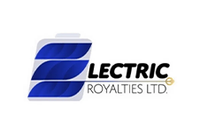Jon Hykawy of Stormcrow Capital: Cobalt Supply Needs to Rise
With demand for lithium-ion batteries growing, the world will need more cobalt from more geographically diverse sources, said Hykawy at PDAC.
By all accounts, lithium, graphite and cobalt got a lot of attention at this year’s Prospector’s & Developers Association of Canada (PDAC) conference.
Hype surrounding the metals stems from the fact that they’re all used to make lithium-ion batteries, which are required by electric vehicle makers. In particular, many market participants are excited by the fact that Tesla Motors (NASDAQ:TSLA) and other major companies are building lithium-ion battery megafactories that will make large amounts of the batteries and require vast quantities of lithium, graphite and cobalt.
Of course, the key question is exactly how much lithium, graphite and cobalt these companies will require, and how their demands will impact the market. Various firms have come forward with estimates, but at this early date it remains difficult to accurately predict what companies’ future requirements will be.
During a talk on lithium-ion batteries at PDAC, Jon Hykawy of Stormcrow Capital took the time to address those questions. While the talk largely centered on lithium itself (check out our overview here), he also made some interesting comments about cobalt.
In terms of supply and demand, Hykawy said that in 2015, annual global mined cobalt production clocked in at 120,000 tonnes, with 53,000 tonnes being used as cathode material. However, “by 2025, we’re looking at a requirement for cobalt of 121,000 tonnes, which is actually in excess of all producing cobalt today.”
That, said Hykawy, is “interesting,” particularly in light of the fact that “cobalt is a by-product.” In other words, more often than not it’s a secondary product mined at the same time as other metals — for example, a mine that produces mainly copper may produce some cobalt as a by-product.
Part of the problem with cobalt’s status as a by-product is that it means cobalt supply is tied to supply of other metals. Consider again the case of copper — if a copper mine that also produces cobalt comes to the end of its life or is placed on care and maintenance, some cobalt will come off the market as well. That concern came to the fore last fall when Katanga Mining (TSX:KAT) announced an 18-month suspension of copper and cobalt processing.
Relatedly, said Hykawy, the fact that cobalt is largely a by-product of other metals is an issue because “cobalt for batteries has to be clean. Free of iron, free of aluminum, free of a bunch of other things. That’s a difficult problem. Bear that in mind.”
The solution, he believes, is for cobalt production “to be significantly increased and … diversified geographically.” In other words, the volume of cobalt produced needs to rise, and it needs to come from a wider variety of locations (currently the Democratic Republic of the Congo is the world’s largest cobalt producer by an extremely wide margin).
In conclusion, he pointed out that the consequences of those things not happening could be dire. If there is not enough cobalt to go around, then prices will go up. And with higher prices, “Elon Musk and Tesla are going to have some issues to deal with.”
Securities Disclosure: I, Charlotte McLeod, hold no direct investment interest in any company mentioned in this article.
Related reading:
Jon Hykawy of Stormcrow Capital: Lithium Market in a ‘Precarious Position’
10 Top Cobalt-producing Countries


